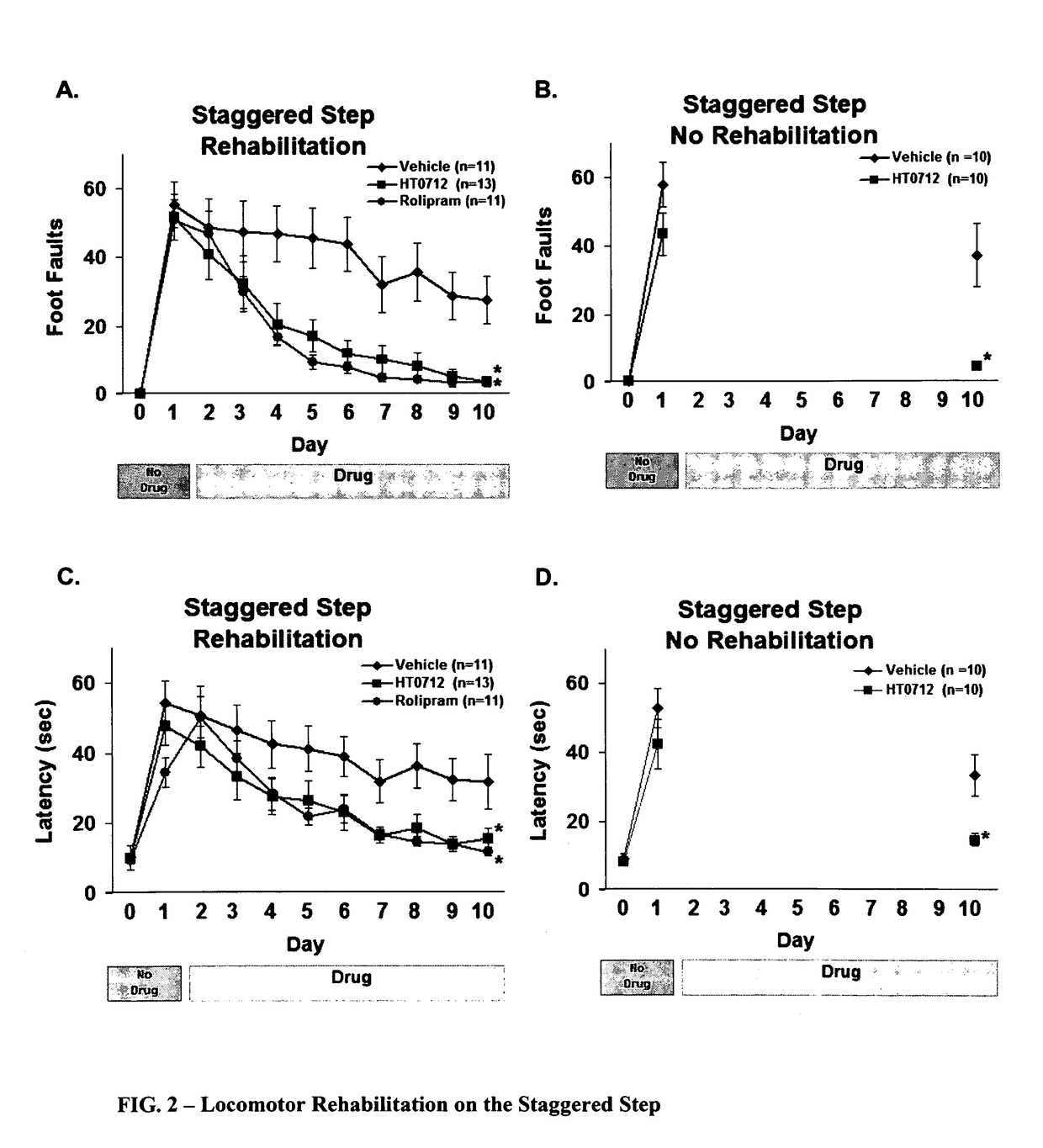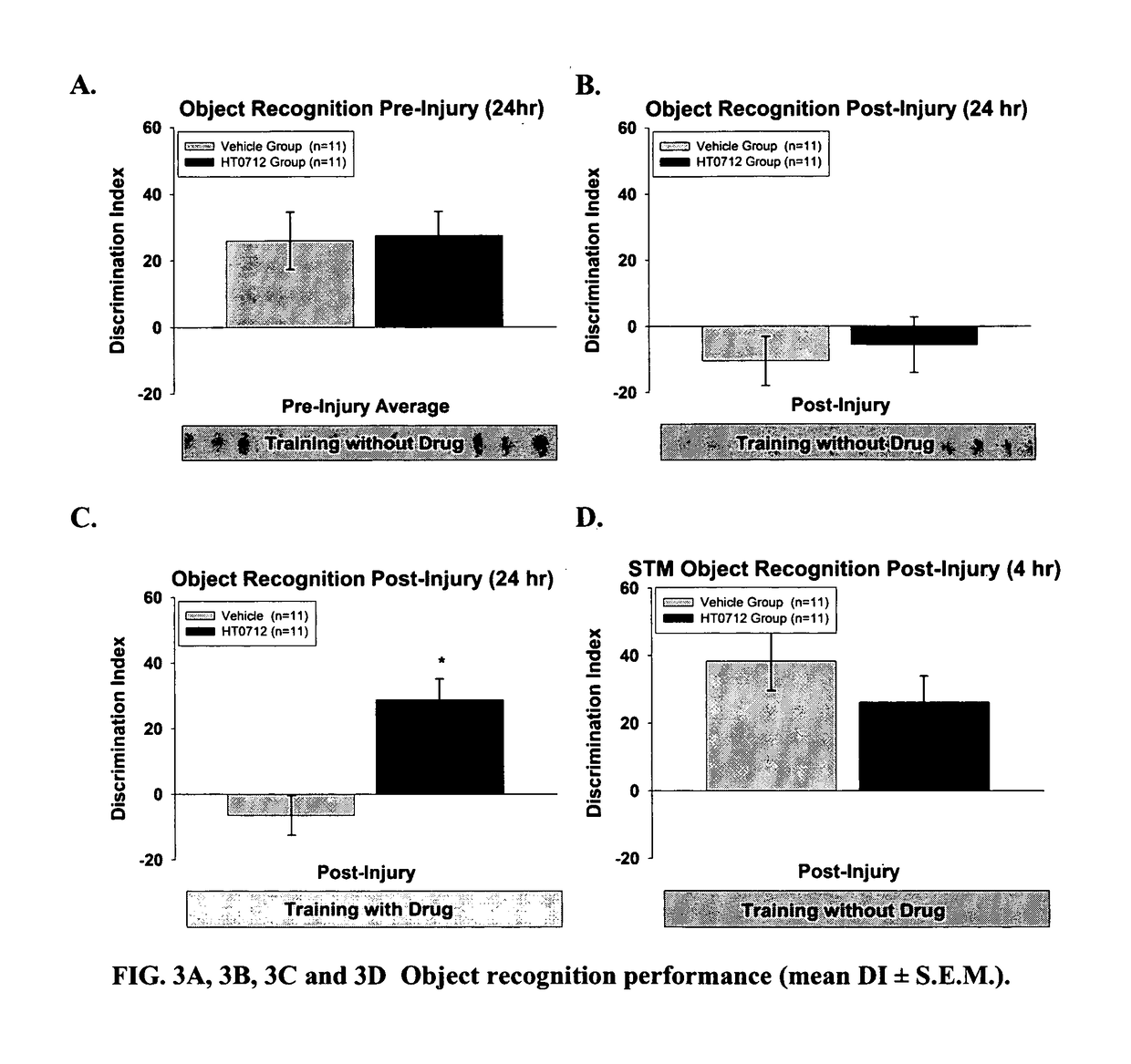Phosphodiesterase 4 inhibitors for cognitive and motor rehabilitation
a technology of phosphodiesterase and inhibitors, applied in the direction of biocide, heterocyclic compound active ingredients, drug compositions, etc., can solve the problems of affecting the autonomy and quality of life of individuals, affecting the autonomy of individuals, and cognitive training protocols are often very costly and time-consuming, so as to improve the efficiency of cognitive rehabilitation and various forms of cognitive dysfunction , to enhance normal cognitive performance (ability or function), to improve the efficiency of rehabilitate various forms of motor dysfunction
- Summary
- Abstract
- Description
- Claims
- Application Information
AI Technical Summary
Benefits of technology
Problems solved by technology
Method used
Image
Examples
example
[0101]Subjects were 103 adult male Sprague-Dawley rats (Taconic, Gremantown, N.Y.) weighing between 275-300 g at the onset of experimentation. Rats were single housed in a temperature-controlled animal facility with a 12:12 h light-dark cycle and had access to food and water ad libitum. All animal protocols conformed to NIH guidelines and were approved by Cold Spring Harbor Laboratory Animal Care and Use Committee.
Motor Rehabilitation with the Staggered Step Task
[0102]The staggered step task used in this study was characterized previously by Klint et al., Journal of Neurotrauma, 21st Annual National Neurotrauma Society Symposium, 20(10): (2003). It consists of a runway 8′ long and 3.5′ wide upon which a series of 28 raised steps are attached. Steps were alternately “staggered”0.5 cm from midline and 25 cm between steps. This positioning placed the top walking surface directly in line with the natural walking gait of a 350 g rat. A thin piece of Plexiglas (8′ long 2.5″ wide 2 mm thic...
PUM
 Login to View More
Login to View More Abstract
Description
Claims
Application Information
 Login to View More
Login to View More - R&D
- Intellectual Property
- Life Sciences
- Materials
- Tech Scout
- Unparalleled Data Quality
- Higher Quality Content
- 60% Fewer Hallucinations
Browse by: Latest US Patents, China's latest patents, Technical Efficacy Thesaurus, Application Domain, Technology Topic, Popular Technical Reports.
© 2025 PatSnap. All rights reserved.Legal|Privacy policy|Modern Slavery Act Transparency Statement|Sitemap|About US| Contact US: help@patsnap.com



